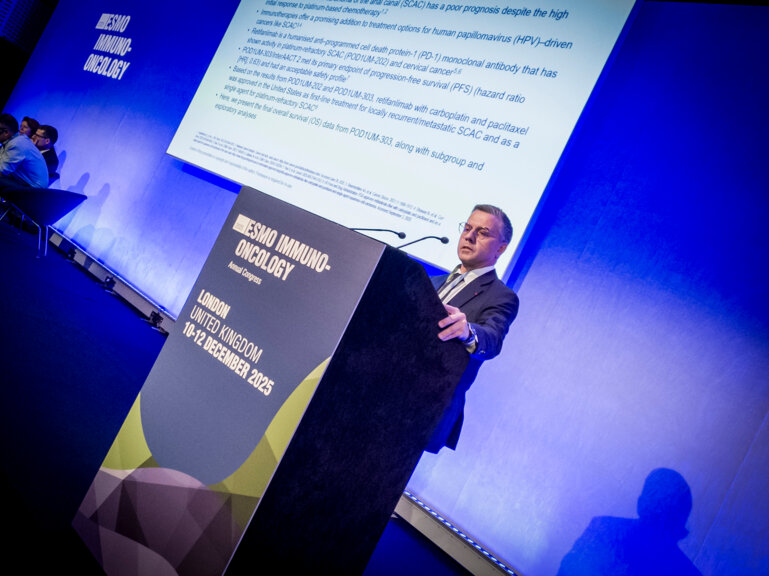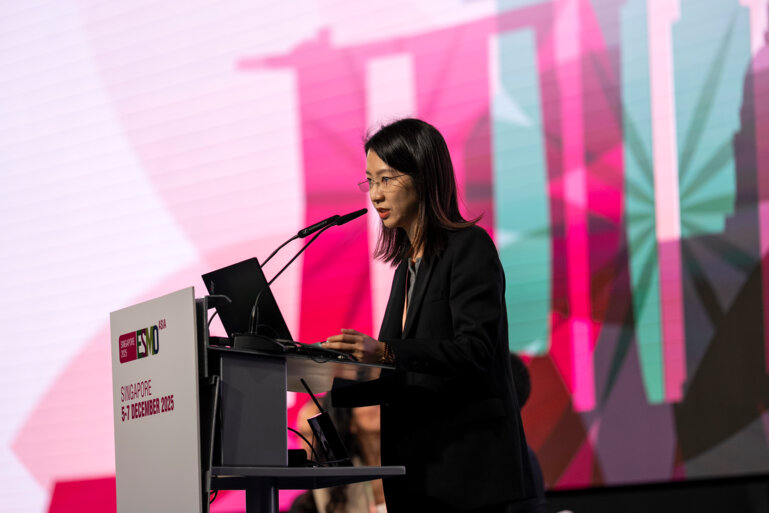Results presented at ESMO Congress 2023 open-up an interesting debate on the use of currently recommended treatment regimens
Management of advanced pancreatic adenocarcinoma (PDAC) relies on the use of chemotherapy. For many years, both triple chemotherapy with FOLFIRINOX (irinotecan, oxaliplatin and 5-fluorouracil) and double chemotherapy with gemcitabine and nab-paclitaxel (GemNabPaclitaxel) were considered equally active options for metastatic pancreatic cancer. This was based on data from two separate randomised clinical trials – the PRODIGE-4 trial and the MPACT trial – showing superiority of these two combos over single agent gemcitabine (N Engl J Med. 2011 May 12;364(19):1817–25. N Engl J Med. 2013 Oct 31;369(18):1691-703). However, FOLFIRINOX and GemNabPaclitaxel had not been compared head to head and even though some differences were seen in overall survival (OS) outcomes with slightly larger OS for FOLFIRINOX (median OS 11.1 months in the PRODIGE-4 trial) than for GemNabPaclitaxel (median OS 8.5 months in the MPACT trial) inter-study comparisons were challenging, especially since the MPACT trial had also included patients with performance status of 2. Thus, in the absence of a head-to-head comparison in a randomised clinical trial, guidelines supported the use of both combination chemotherapies as suitable alternatives in the first-line setting for metastatic PDAC (Ann Oncol. 2023 Sep 5:S0923-7534(23)00824-4). In 2023, results from the NAPOLI-3 study were presented (J Clin Oncol.2023.41.4_suppl.LBA661). The randomised phase III trial compared triple chemotherapy with NALIRIFOX (liposomal irinotecan, 5FU and oxaliplatin) and double treatment with GemNabPaclitaxel, with 383 and 387 patients in each arm, respectively. The study met its primary endpoint and showed benefit in terms of OS in favour of NALIRIFOX (median OS 11.1 months vs 9.2 months; Hazard Ratio (HR) 0.84 (95% CI 0.71-0.99; p-value 0.04)). There was also superiority in terms of progression free survival (median OS 7.4 months vs 5.6 months; Hazard Ratio (HR) 0.70 (95% CI 0.59-0.84; p-value 0.0001)). Response rate was slightly higher in the NALIRIFOX arm (41.8% VS 36.2%).
Based on this preliminary data, and despite the full manuscript being still awaited, clinicians started to consider triple chemotherapy as a preferred option for fit patients over doublet chemotherapy in this setting. Since liposomal irinotecan may not be accessible and would still be pending approval in this setting (approved for second-line therapy after progression to gemcitabine-based therapy), standard irinotecan with triple therapy in the form of FOLFIRINOX could be considered acceptable in this setting.
During the ESMO Congress 2023 (Madrid, 20-24 October), the results presented from the JCOG1611-GENERATE study bring the above practice into question, and definitely open a very interesting debate. First of all, we could wonder on the relevance of the use of liposomal irinotecal over standard irinotecan. It is unlikely for this to be a very significant factor, since the median OS in the NALIRIFOX in the NAPOLI-3 trial was very similar to FOLFIRINOX in PRODIGE-4 and shorter than with mFOLFIRINOX in JCOG1611-GENERATE. Secondly, the use of S-1 instead of 5-FU does not seem to significantly change the outcome, since results with mFOLFIRINOX and S-IROX were also similar in JCOG1611-GENERATE. What comes up as a very interesting finding is the exceptionally long median OS achieved with GemNabPaclitaxel (17.7 months), which makes us wonder on the potential reasons for why the control arm overperforms at such a magnitude. Whether the toxicity profile being more favourable could be an explanation could be hypothesised, but further details on the study population and comparison of baseline characteristics between arms will be required to further explore these differences further. Further details will also be required to assess whether the JCOG1611-GENERATE is really putting into question the potential superiority of triplets in PDAC, or whether double chemotherapies may actually be a superior option in this setting.






